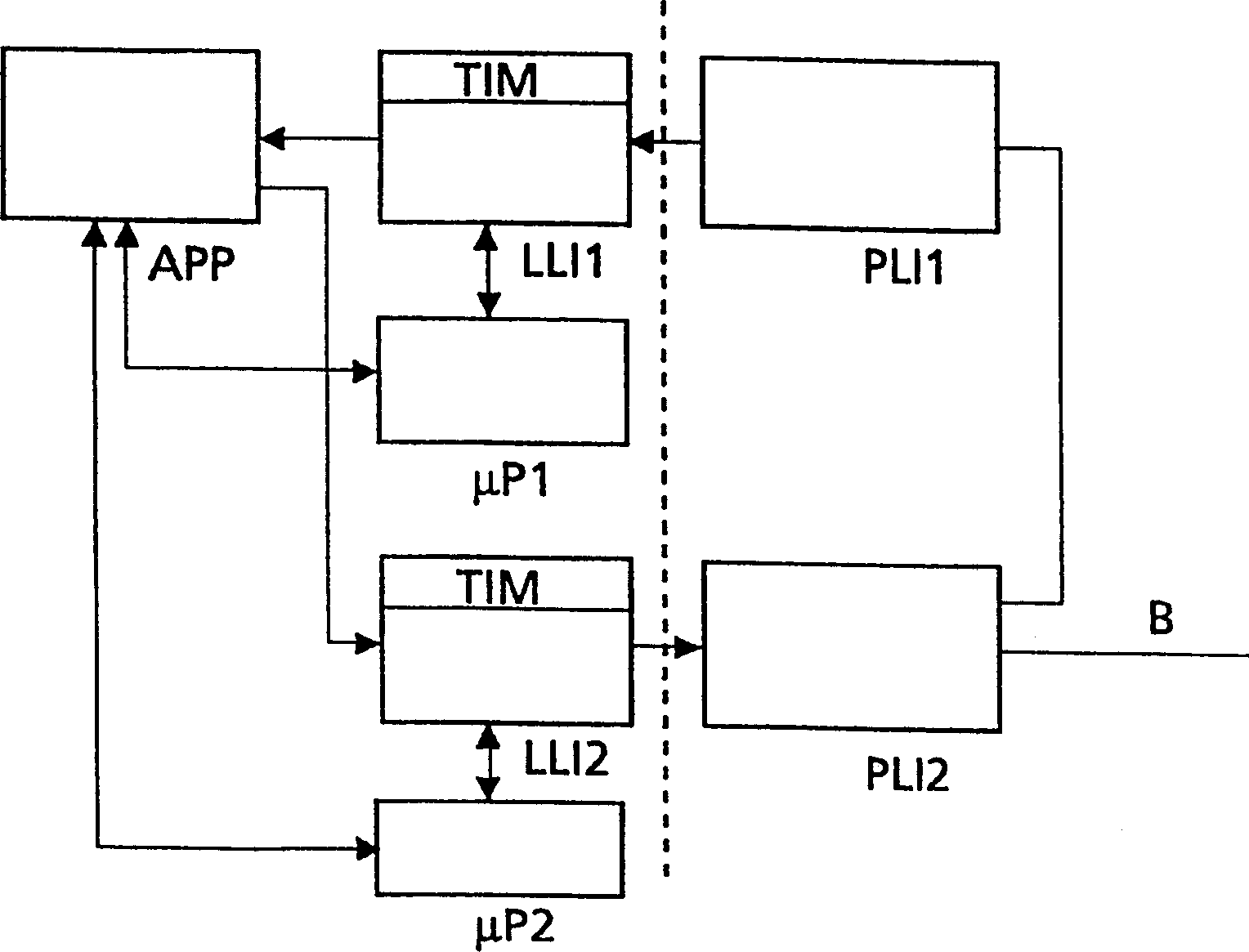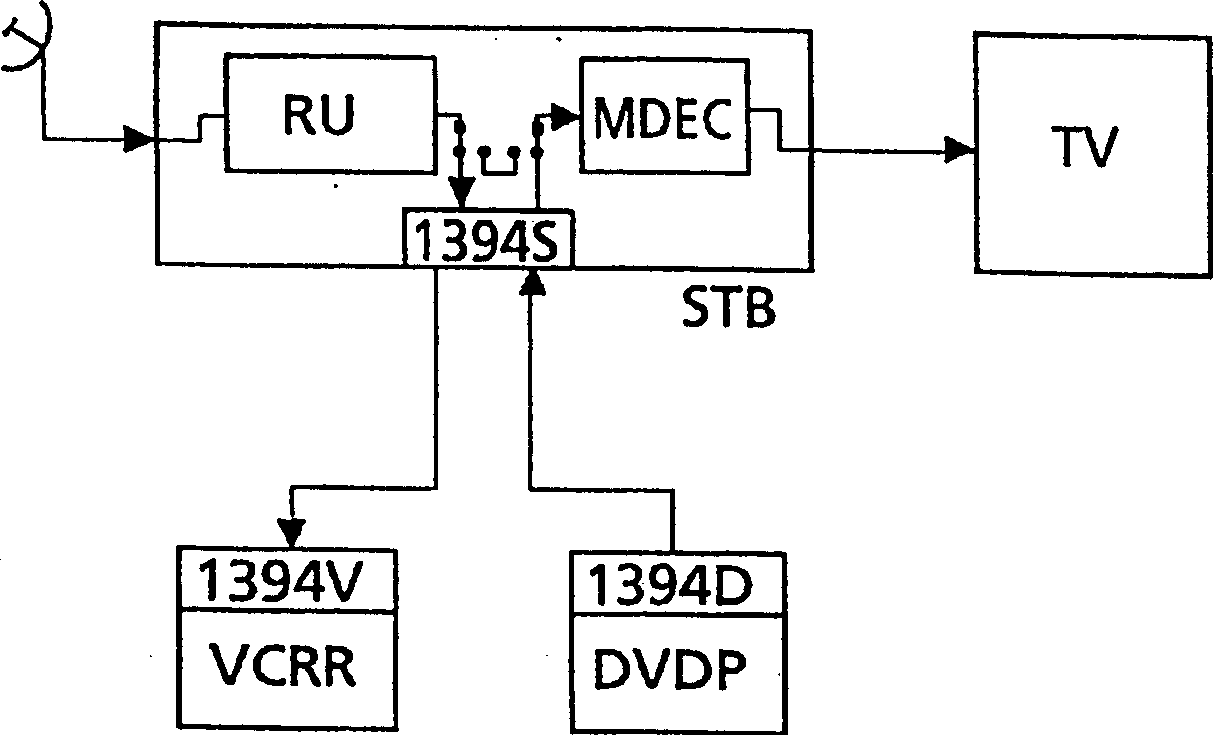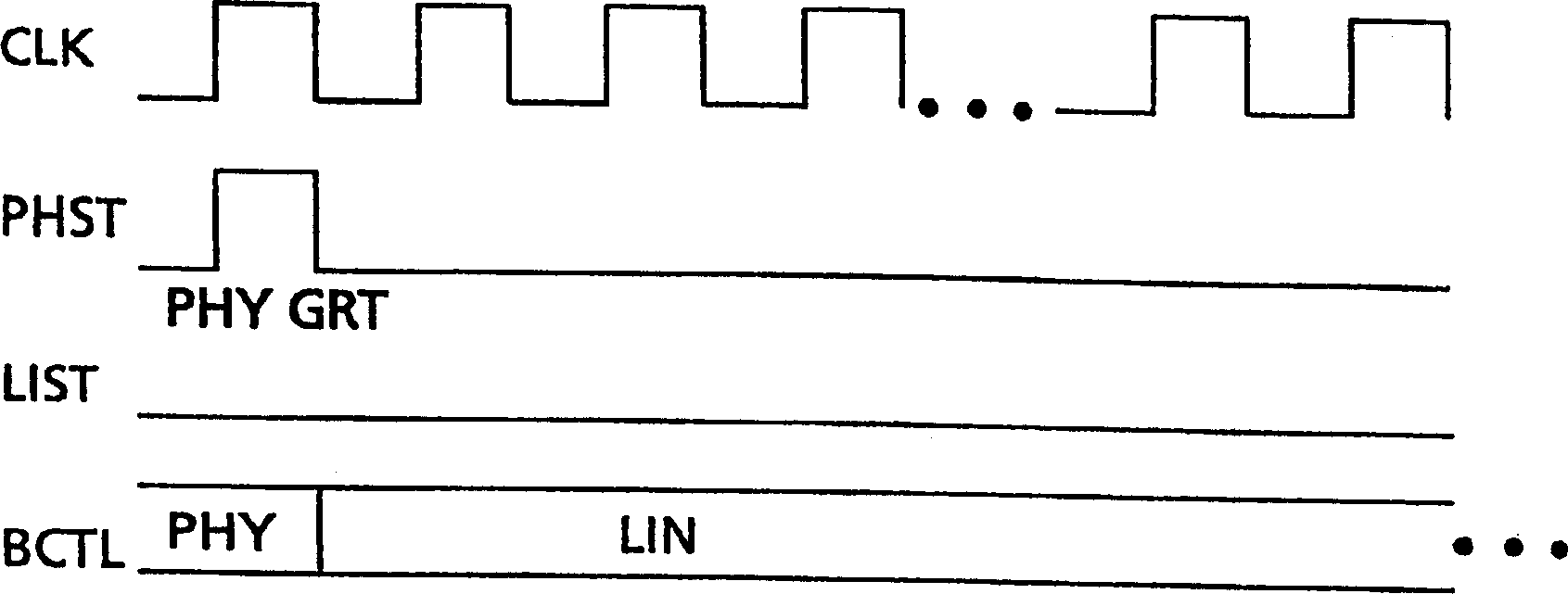Method and apparatus for transferring data on bus to or from device to be controlled by said bus
A bus transmission and bus technology, which is applied in the field of transmitting data and equipment to a device on the bus or from the device to the bus, and can solve problems such as bus blocking.
- Summary
- Abstract
- Description
- Claims
- Application Information
AI Technical Summary
Problems solved by technology
Method used
Image
Examples
Embodiment Construction
[0036] exist figure 1Among them, the first physical layer integrated circuit PLI1 is connected to the second physical layer integrated circuit PLI2 through the IEEE 1394 bus cable, and the second physical layer integrated circuit PLI2 is also connected to another IEEE 1394 bus cable B. PLI1 is located at the other end assigned to the first link layer integrated circuit LLI1 for data input, and PLI2 is assigned to the second link layer integrated circuit LLI2 for data output. LLI1 and LLI2 are assigned to the same application device APP. LLI1 and PLI1 are controlled by the first microprocessor μP1 via LLI1. LLI2 and PLI2 are controlled by the second microprocessor μP2 via LLI2. The application device APP can be controlled by μP1 and μP2, or by one of them. In both cases, μP1 and μP2 can interact with each other (not shown).
[0037] For example, the present invention can be used in figure 2 In the application shown, a set-top box with a receiving unit RU, an MPEG decoder ...
PUM
 Login to View More
Login to View More Abstract
Description
Claims
Application Information
 Login to View More
Login to View More - R&D
- Intellectual Property
- Life Sciences
- Materials
- Tech Scout
- Unparalleled Data Quality
- Higher Quality Content
- 60% Fewer Hallucinations
Browse by: Latest US Patents, China's latest patents, Technical Efficacy Thesaurus, Application Domain, Technology Topic, Popular Technical Reports.
© 2025 PatSnap. All rights reserved.Legal|Privacy policy|Modern Slavery Act Transparency Statement|Sitemap|About US| Contact US: help@patsnap.com



